Traditional Armenian holidays
The calendar of traditional Armenian holidays - Armenian tonatsuyts - represents an annualcycle of the national holidays. Similar to the calendars of other nations, it includes local customsand folk rites.
Don’t forget that Armenians didn’t have their own national identity for ages, and theircommunities had to live among foreigners. Practically, this calendar was a kind of a smartchronograph aimed to regulate and purify the habits of new generations, integrate them into acommunity life, and involve in the cycle of the national traditions and local beliefs.Armenian traditional holidays contain the golden seeds of folk wisdom that should be respectedeven nowadays. People going down the roads of millenniums don’t take excessive baggage withthem.
It is noticeable that all holidays are mainly targeted at young people: they receive a wonderfulopportunity to be in company, talk to each other, make acquaintances and fell in love.
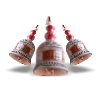 | SURB TSNUND – Christmas (Nativity of Jesus Christ and His Baptism): |
| On January, 6 the Armenian people celebrate the Nativity of Jesus Christ and His Baptism in theRiver Jordan. The day before people attend the Christmas Eve Liturgy, take candles at the churchand light them at home before each member of the family. |
 | SAINT SARKIS: |
| The day of Saint Sarkis, the patron saint of young love, is celebrated 63 days before Easter(Zatik), on a Saturday falling sometime between January, 18 and February, 23. |
 | TRNDEZ or TERENDEZ: |
| Trndez is the Armenian St.Valentine’s Day, the day of young couples. This holiday is celebratedon February, 14, in winter, when the weather is cold and frosty, but hearts are warmed with thefire of love. |
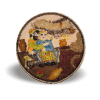 | BAREKENDAN - Armenian Carnival Season: |
| Barekendan precedes seven weeks of Great Lent, the period of severe requirements andprohibitions. But today is jolly Barekendan, when a masked guiser bites with his critical jokesand makes mockery of the Penny Pincher, the Heavy Eater, and the holier-than-thou Hypocriteusually making remarks to young people. Barekendan lasts for two weeks. |
 | KAHTSATS KARASUNOTS - Great Lent: |
| Traditionally, Great Lent is the time of abstinence and repentance for the faithful. It begins withuniversal reconciliation. Starting from the morning people are trying to forget all old insults andquarrels. Enemies make peace with each other with the help of special middlemen. |
 | TSAGHKAZARD – Palm Sunday: |
| Palm Sunday (Tsaghkazard) is celebrated six weeks after Great Lent. People take palm andwillow branches and bring them to the church as well as use them to decorate their houses. Thisholiday marks the beginning of spring. |
 | AVAG SHABAT - Holy Week: |
| Holy Week (Avag Shabat) follows Tsaghkazard. At this week each hour has a special deep meaning. |
 | ZATIK – Armenian Easter: |
| People celebrate Easter to commemorate those great efforts of nature necessary to give birth tonew life in spring. This holiday falls on the first Sunday following the full moon that occurs onor next after the vernal equinox. |
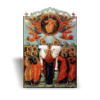 | HAMBARTSUM - Ascension Day: |
| Ascension Day, “the most mysterious” holiday of the year, is celebrated on Thursday, 40 daysafter Easter. It symbolizes the unbreakable bond of people and nature. In the Church calendarthis holiday coincides with the Ascension of Lord Jesus Christ. |
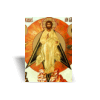 | VARDAVAR – Transfiguration of Jesus Christ: |
| This summer holiday is celebrated 14 weeks after Easter. According to the Christian tradition,this holiday coincides with the Transfiguration of Lord Jesus Christ. |
 | GRAPE BLESSING DAY: |
| This holiday is celebrated on the nearest Sunday after August, 15. People take the first grapeharvest to the church to get it blessed. At the same time it is a gift to the Holy Virgin Mary. |
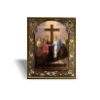 | KHACHVERATS - Exaltation of the Holy Cross: |
| This holiday is celebrated on September, 14. Since ancient times people hold the memory of thedeceased and prayed for the salvation of their souls. This day is a memorial to those who havepassed away, and people often visit cemeteries and graves of their relatives and friends. |
 | AMANOR – Armenian New Year: |
| New Year is celebrated on the night of December, 31 to January, 1. People lay a fire in thefireplace, put on new clothes, and cook traditional dishes. All incidents and events of this periodof time have a special meaning – no matter whether they happen for better or worse. |



